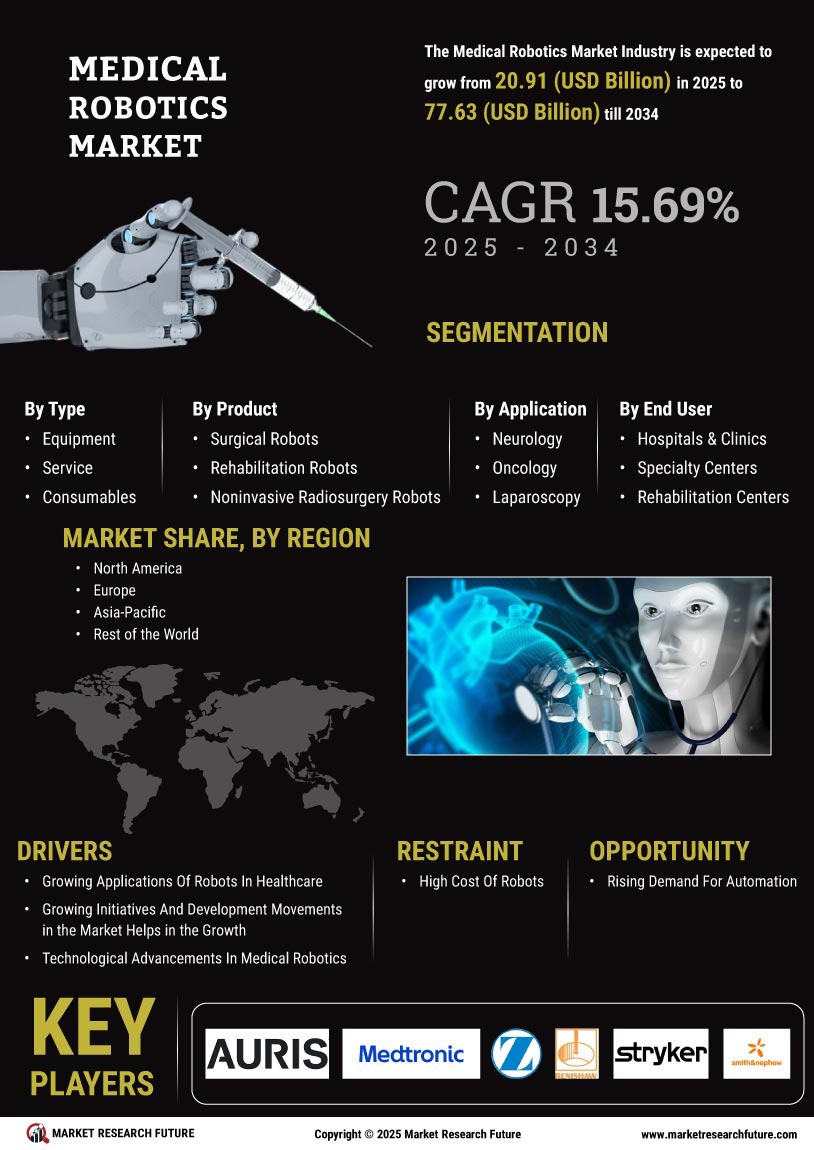Medical Robotics Market Summary
As per Market Research Future Analysis, the Global Medical Robotics Market was valued at 18.07 USD Billion in 2024 and is projected to grow to 89.81 USD Billion by 2035, at a CAGR of 15.69% from 2025 to 2035. The market is driven by the increasing applications of medical robotics, technological advancements, and strategic initiatives. Surgical robotics is a key growth area, enhancing minimally invasive surgeries and improving recovery times. The rise in medication errors is also driving demand for automation in dispensing processes.
Key Market Trends & Highlights
The medical robotics market is witnessing significant growth due to various factors.
- Market Size in 2024: 18.07 USD Billion
- Projected Market Size by 2035: 89.81 USD Billion
- CAGR from 2025 to 2035: 15.69%
- Rehabilitation robots segment dominated the market in 2022
Market Size & Forecast
| 2024 Market Size | USD 18.07 Billion |
| 2035 Market Size | USD 89.81 Billion |
Major Players
Auris Health Inc. (US), Medtronic (Ireland), Zimmer Biomet (US), Renishaw Plc. (UK), Health Robotics S.R.L (Europe), Stryker (US), Smith+Nephew (UK), Intuitive Surgical (US), KUKA AG (Germany), CMR Surgical (UK)










Leave a Comment